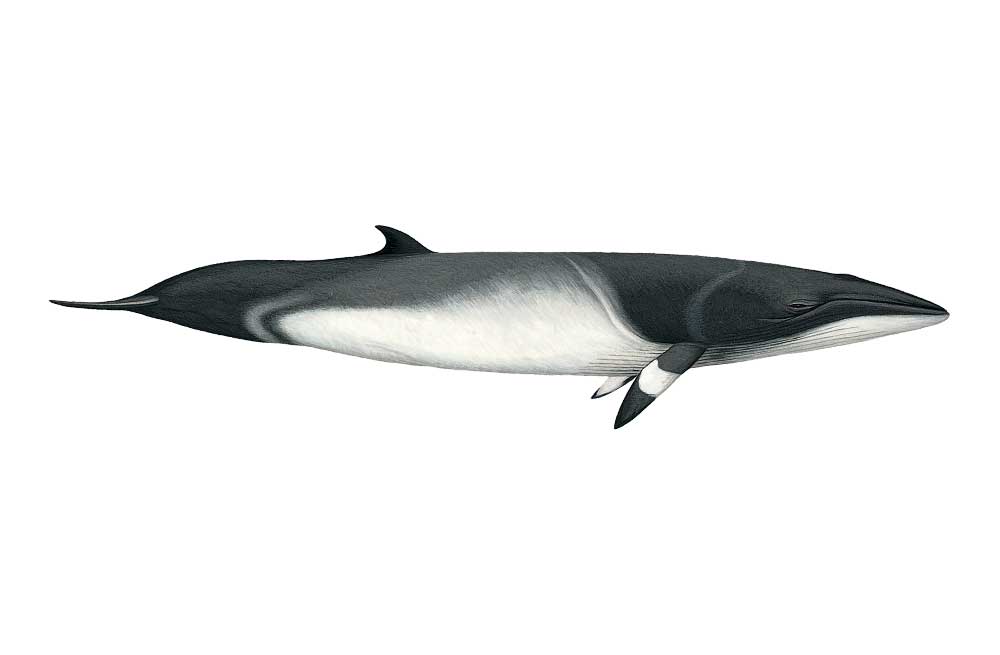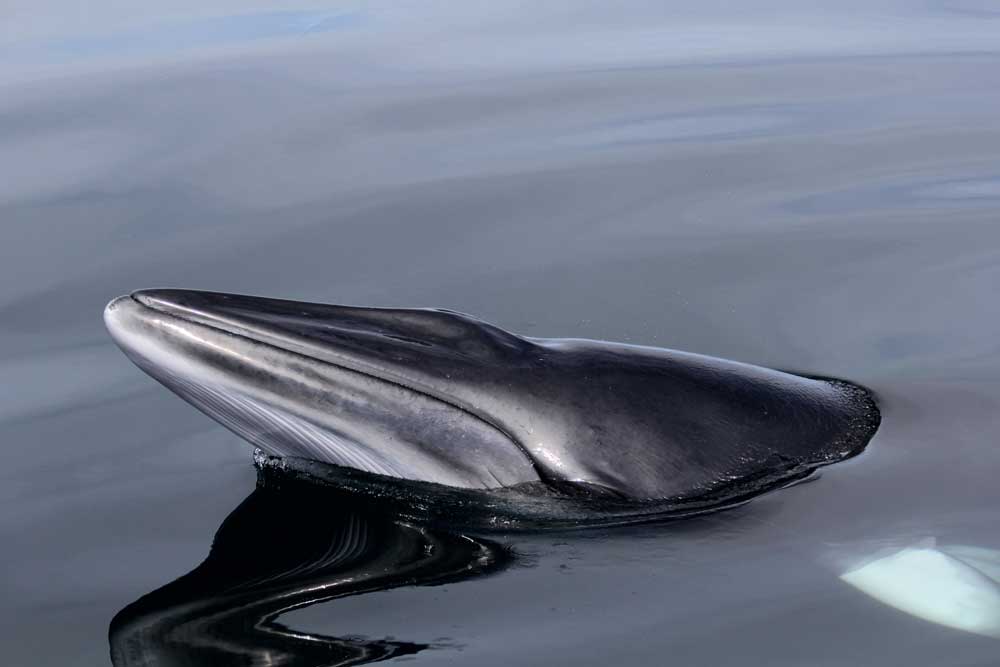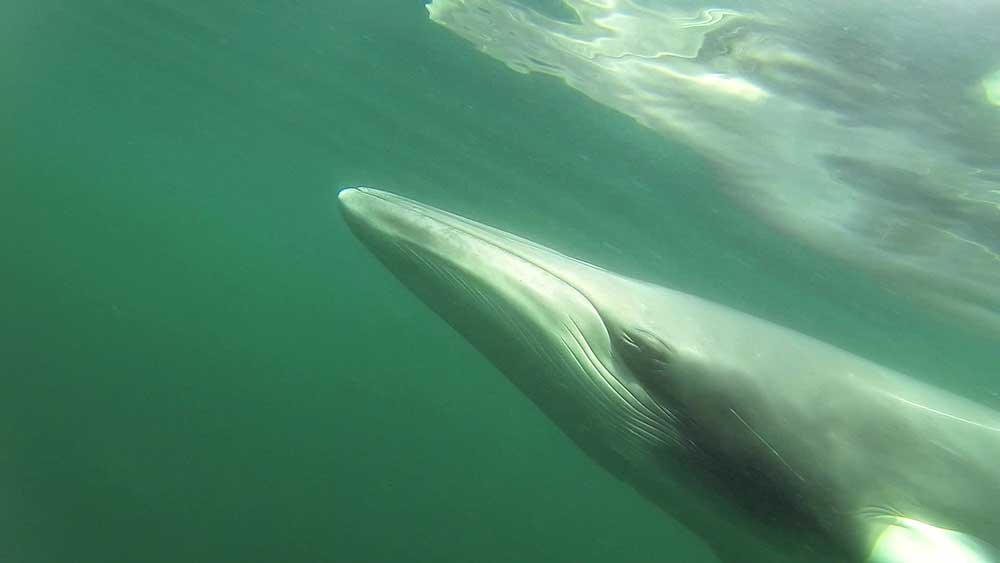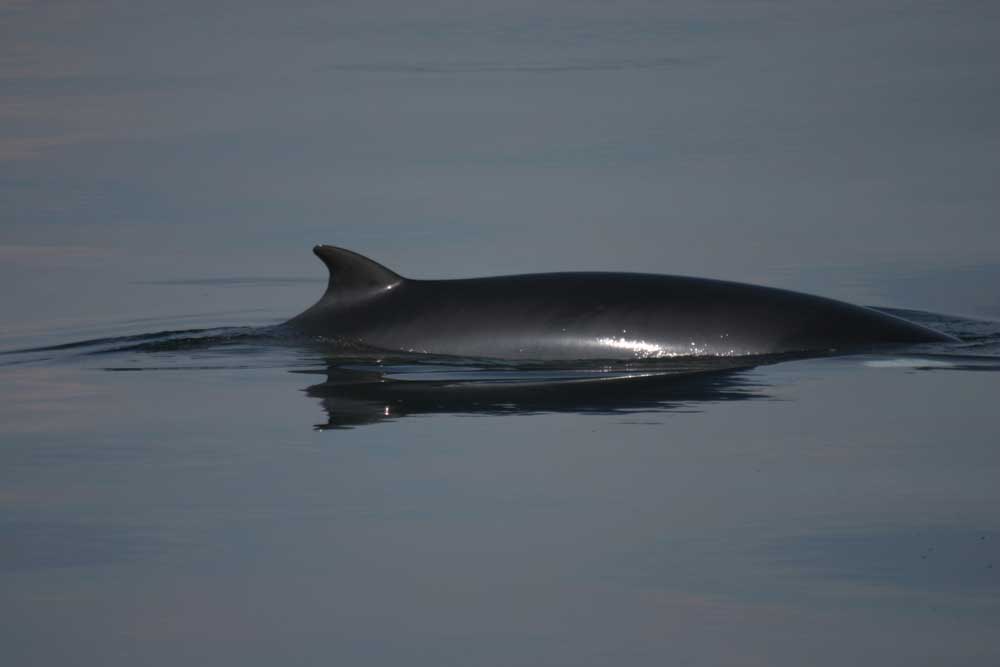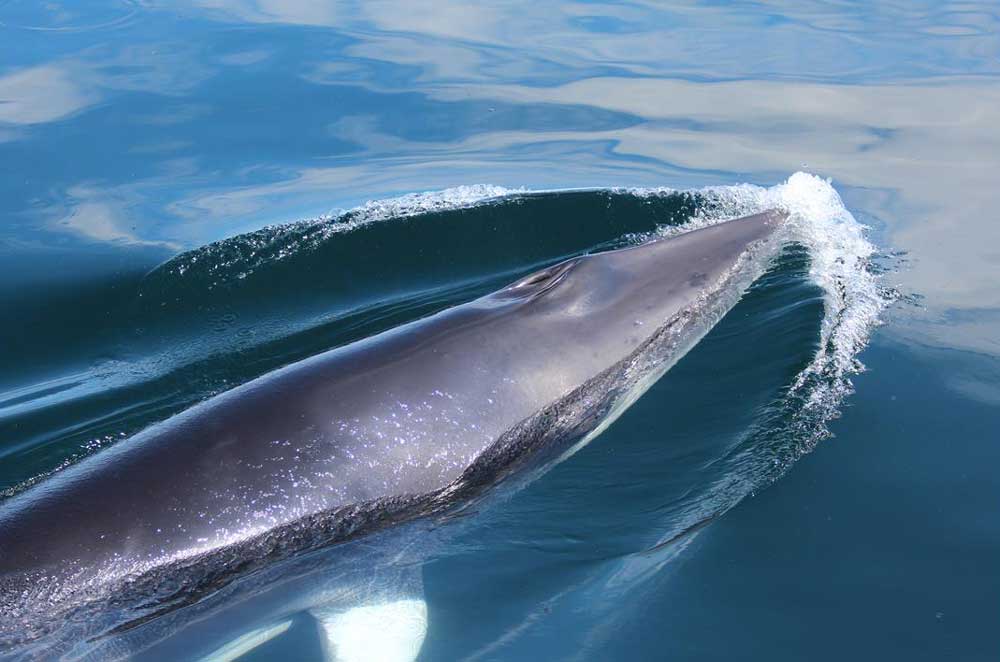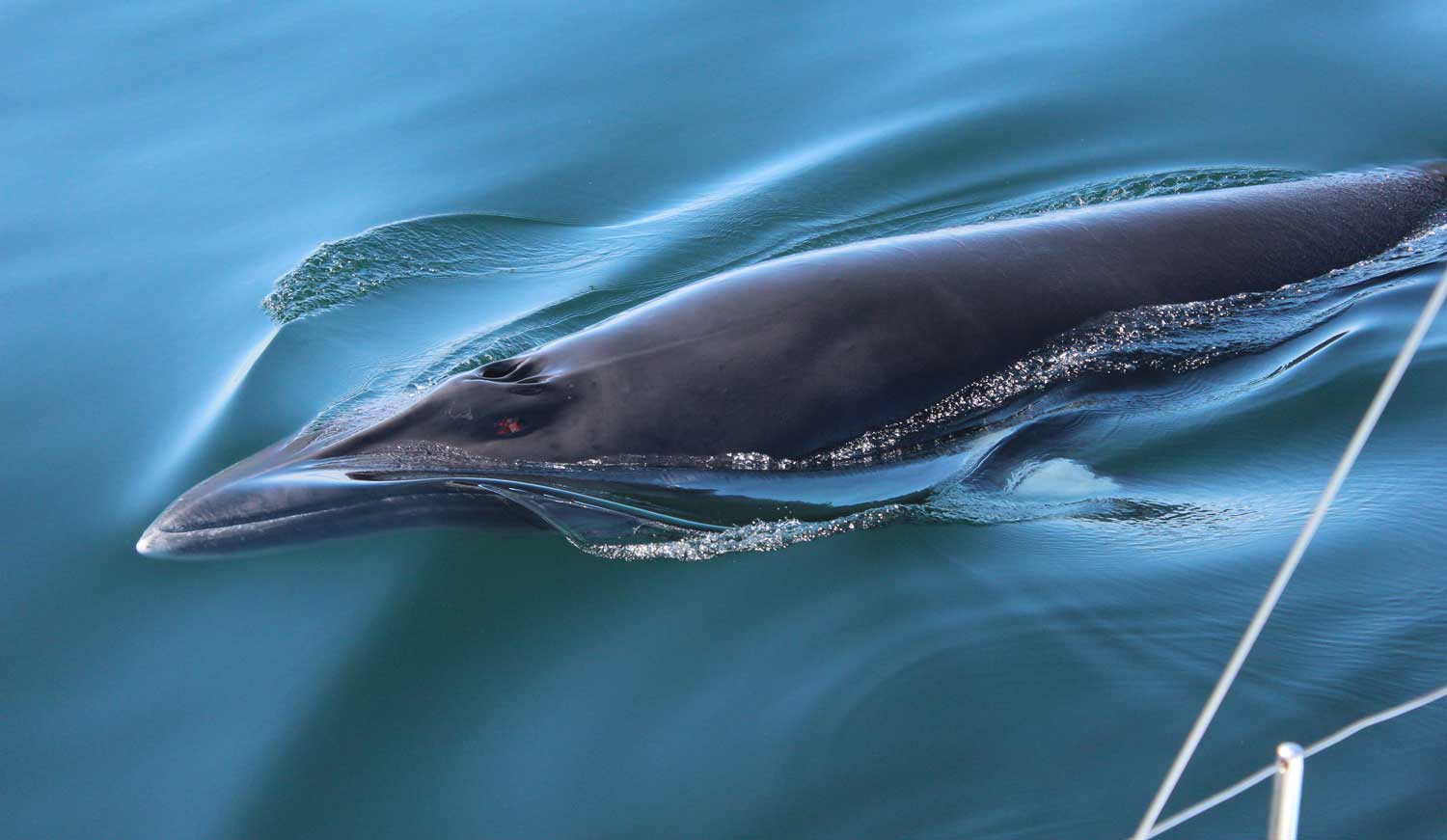
Latin: Balaenoptera acutorostrata
Gaelic: muc-mhara mhionc
CETACEAN FACTFILE:
Months: April – October
Length: Up to 10 metres
Range: Throughout the Northern hemisphere, except the Arctic Ocean
Threats: Marine litter, pollution, commercial whaling, ship strikes
Diet: Small schooling fish and some plankton
PHYSICAL DESCRIPTION
Minke whales are the smallest baleen whale found in UK waters, measuring 7 to 10 metres when fully grown, with females usually slightly longer than males. Their bodies are slender and streamlined, and the head is narrow and pointed. The dorsal fin and back are dark grey or black, the underside is bright white and there is a distinctive white band on the upper side of each pectoral fin. The dorsal fin is positioned about two-thirds of the way down the back and it is visible at the same time as the blowhole when the animal surfaces, but a minke whales blow is not often visible at sea. The dorsal fin is sickle-shaped and accumulates marks and scars. Photographs of the dorsal fins are used by the Hebridean Whale and Dolphin Trust to identify and follow the movements of individual animals in the Hebrides. This non-invasive technique is known as photo-identification and to date over 250 individuals have been identified using this method.
BEHAVIOUR
Minke whales are generally solitary, although they can sometimes be seen in feeding groups of up to ten animals. They are capable of swimming at speeds of up to 13 mph and their typical dive sequence is five to eight blows at intervals of less than a minute, followed by a dive which usually lasts three to eight minutes. Some minke whales are inquisitive around boats and will sometimes come close and even spy-hop (head raised above the surface of the water) to investigate. They are occasionally seen breaching clear of the water in the Hebrides.
HABITAT AND DISTRIBUTION
Across the northern hemisphere, minke whales are found from the tropics to the ice edges making them one of the most widely distributed baleen whale. The annual movement patterns of minke whales are not fully understood but they are thought to make a general migration between tropical breeding grounds in the winter, and colder feeding regions during the summer. Minke whales are frequently seen in coastal and inshore waters around the Hebrides from April to October..
FOOD AND FORAGING
In the Hebrides, the minke whales diet includes a variety of fish, including sandeel, herring and whiting, along with some plankton. There are 230 to 360 baleen plates in each side of the upper jaw; these are coarse, hair-like structures formed of keratin that hang down into the mouth. They feed by engulfing large volumes of prey and water, and they then sieve the water back out through the baleen plates and swallow their prey whole. A commonly seen feeding behaviour, known as lunge feeding, involves the whale lunging at its prey at high speed from below and erupting at the surface with the throat grooves extended. Minke whales in the Hebrides are commonly seen feeding in association with seabirds, in particular kittiwakes, Manx shearwaters and young gulls.
STATUS AND CONSERVATION
Minke whales can become entangled in fishing nets and static fishing gear and are also exposed to marine litter, which can get caught on fins or around the head and cause injury and problems with mobility. Collisions with ships may also pose a threat with some reports of minke whales being killed by ship strikes in UK waters. Seismic surveys during gas and oil exploration may cause cetaceans, including minke whales, physical harm at close ranges. This species is still a target of commercial whaling, which continues in the North Atlantic and Antarctic, but not in UK waters.
Minke Whale Hotspot Map

